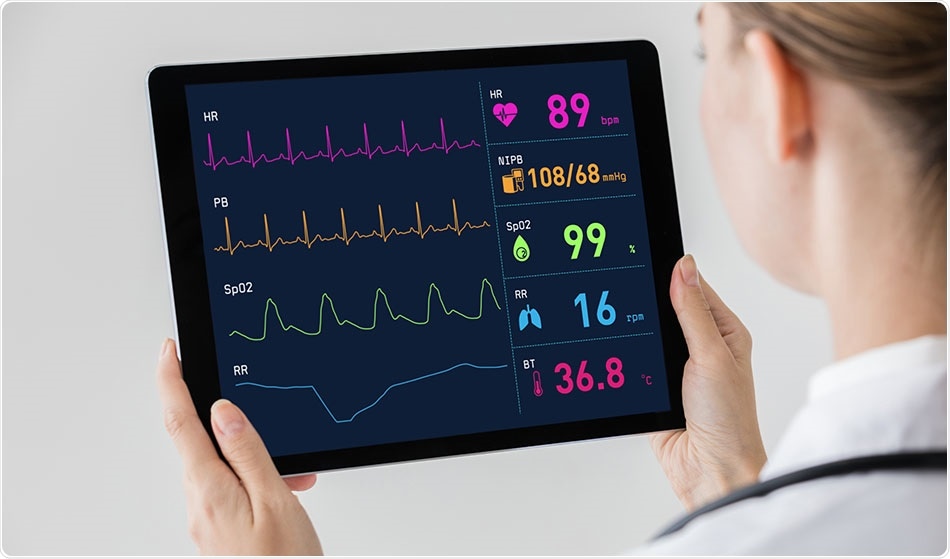Jan 17 2018
A new study featured in the Proceedings of the National Academy of Sciences suggests that biodegradable pressure sensors could aid doctors in monitoring conditions such as encephalitis, chronic obstructive pulmonary disease (COPD), and other chronic conditions.

Credit: chombosan/Shutterstock.com
Engineers at the University of Connecticut (UConn) have developed a biodegradable pressure sensor for use in bone grafts, surgical sutures, and medical implants. The device is a small, flexible sensor made of medically safe materials that have already been approved by the U.S. Food and Drug Administration.
It is hoped that the device could replace existing implantable pressure sensors that contain potentially toxic components that cannot be implanted long-term.
Current sensors must be removed after use, with the removal process subjecting the patient to an additional invasive procedure, thereby extending recovery time and increasing the risk of infection.
The UConn sensor produces a minute electrical charge when pressure is applied against it, meaning the device could also stimulate tissue regeneration. Other potential applications of the device include the examination of patients with heart disease, glaucoma, and bladder cancer.
This is the first study to use biocompatible materials in this way, says Thanh Duc Nguyen, the senior author of the paper.
Medical sensors are often implanted directly into soft tissues and organs. Taking them out can cause additional damage. We knew that if we could develop a sensor that didn't require surgery to take it out, which would be really significant."
Thanh Duc Nguyen, Senior Author of the paper and Assistant Professor in the Department of Mechanical Engineering at the University of Connecticut
A prototype of the sensor developed in Nyugen’s lab comprised a thin polymer film that was 5mm long, 5mm wide, and 200 micrometers thick. The device was implanted in the abdomen of a mouse so as to observe the mouse's respiratory rate. It produced reliable readings of contractions in the mouse's diaphragm for four days before its decomposition into individual organic components.
The researchers also implanted the device in the back of a mouse and then observed for responses from mouse's immune system. The device recorded some minor inflammation following insertion; however, the surrounding tissues returned to normal after four weeks, proving that the sensor was medically safe.
Obtaining biodegradable piezoelectric material – material that produces electrical charge when subjected to pressure as a result of piezoelectric effect – was one of the project's biggest challenges. In its usual state, the medically safe polymer used for the sensor; a product known as Poly-L-lactide (PLLA), is and does not produce any electrical charge under pressure.
Eli Curry, a graduate student in Nguyen's lab successfully transformed the PLLA into a piezoelectric material by carefully heating it, stretching it, and cutting it at the right angle. This changed its internal molecular structure and induced piezoelectric properties. Curry then connected the sensor to electronic circuits so that the material's pressure-sensing capabilities could be tested.
The piezoelectric PLLA film produced minute electrical charges when subjected to even very minute pressures. The small electrical signals are captured and transmitted to another device for review by a doctor.
The researchers hardwired an implanted sensor to a signal amplifier placed outside of a mouse's body. The amplifier then transmitted the amplified electrical signals to an oscilloscope to view the sensor's readings.
The readings from the sensor during testing were equal to those of existing commercial devices, proving its reliability.
The new sensor can capture a wide range of physiological pressures, such as those found in the brain, behind the eye, and in the abdomen. The sensitivity of the device could be adjusted by changing the number of layers of PLLA used and other factors.
There are many applications for this sensor. Let's say the sensor is implanted in the brain. We can use biodegradable wires and put the accompanying non-degradable electronics far away from the delicate brain tissue, such as under the skin behind the ear, similar to a cochlear implant. Then it would just require a minor treatment to remove the electronics without worrying about the sensor being in direct contact with soft brain tissue."
Thanh Duc Nguyen, Senior Author of the paper and Assistant Professor in the Department of Mechanical Engineering at the University of Connecticut
Professor Nguyen's research team has now begun investigating methods to extend the sensor's functional lifetime. Their ultimate goal is to develop a biodegradable sensor system that could decompose within the human body. Until then, the new sensor can be utilized in its current form to help patients avoid invasive removal surgery.
Source:
https://www.eurekalert.org/pub_releases/2018-01/uoc-bsc011618.php